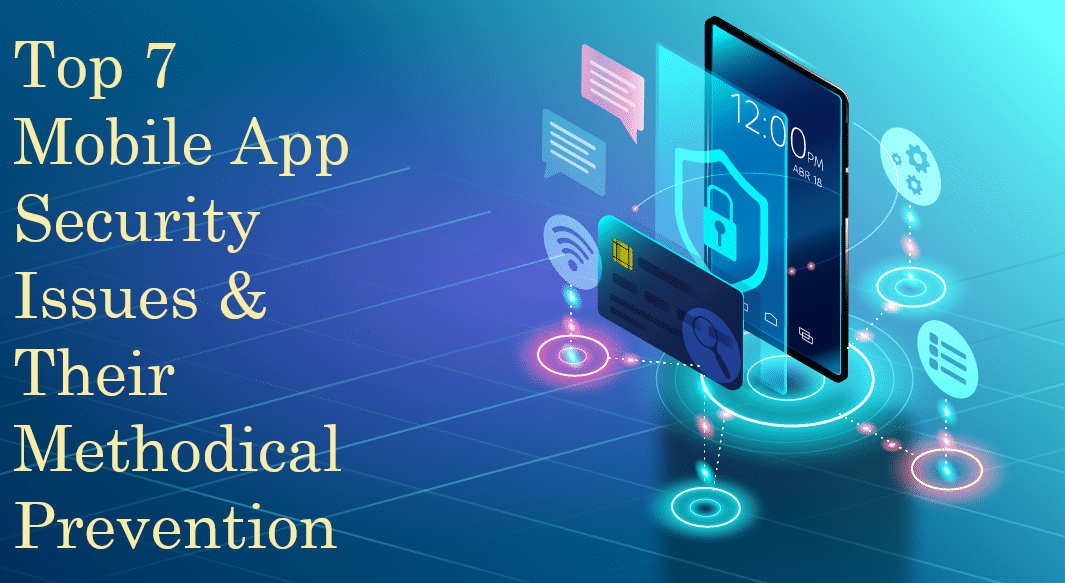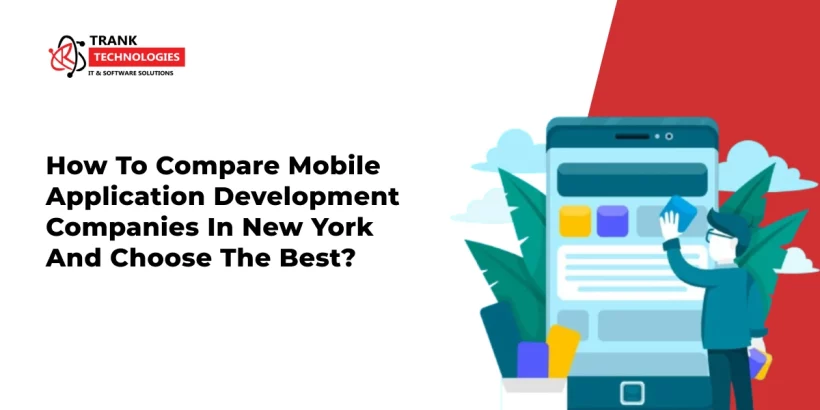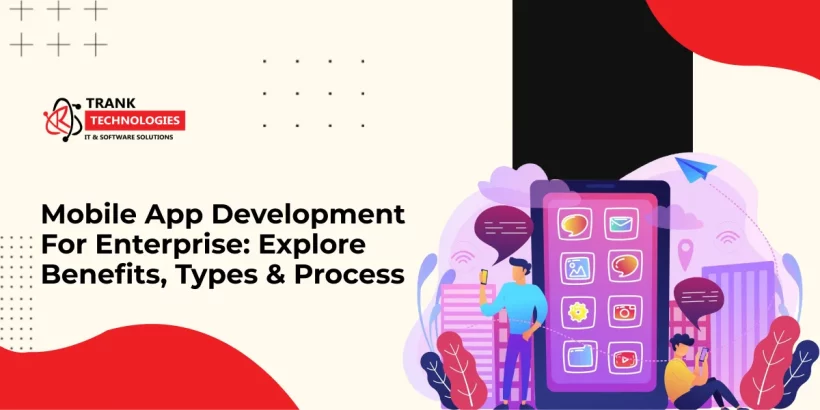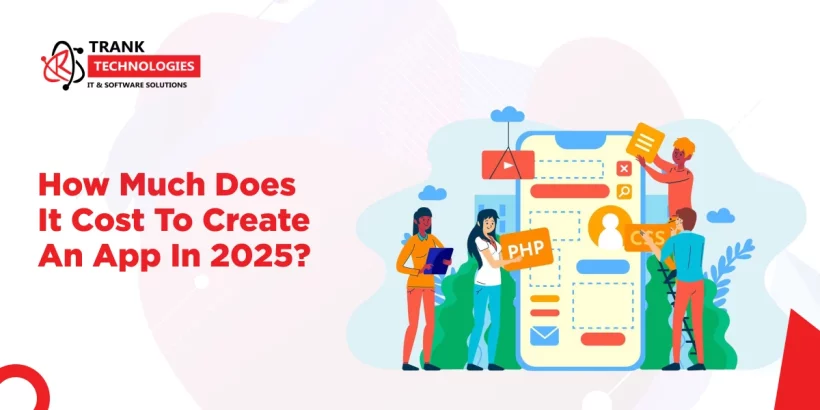
Top 7 Mobile App Security Issues & Their Methodical Preventions
Mobile app development is a great way to optimize businesses for millennial users. But this digital advancement has its shortcomings in the form of data security. In general, mobile apps simplify the transaction between the service provider and the consumer. Most applications are used by thousands and even millions of users around the globe. Such highly used phone apps are also prone to security threats lurking over users’ information to propel technical malfunction. In this post, we will discuss some major vulnerabilities that result in major mobile app security issues. This article also focuses on prevention techniques that can protect mobile apps from anonymous security threats.
How & When Do These Mobile App Security Issues Arise?
A quick glimpse of the statistical insights suggests that the popularity of service-based mobile apps reached its prime in 2018 with a whopping download rate of 200 billion. Unfortunately, more than 40% of these applications were at a high risk of data intrusion. This shocking count included both Android and iOS mobile apps.
These vulnerabilities occur mainly due to the dearth of proper mobile app security measures. Some protection risks begin to originate in the development phase while some problems appear after the launch. The complete rectification process of security-violated mobile apps requires humongous technical measures. These comprehensive code writing processes then end up consuming a significant time of for developers and service providers.
You can also read – 6 Most Common Web App Security Issues & Their Prevention
Therefore, security risk prevention is always better than prolonged restoration. Let’s take a look at some common mobile app security issues and the reasons behind them.
Common Mobile App Security Issues & Their Causes
Inefficient Application Authorization
The first thing that comes in the way of a secured mobile application is poor and arbitrary authentication. This is the primary phase of development suggested to protect personal and confidential details. Let’s understand what exactly goes wrong with app authentication and authorization that lead to protection risks.
Authentication can be explained with the analogy of the registration process in which the app confirms the identity of a new user. Once the users submit sufficient accounting data for verification, it is saved in the database. Thus, every time someone tries to break in by putting in false info, it blocks the user immediately. Authorization, on the other hand, takes place when a user is assigned certain responsibilities and unique access to a system.
If you think about it, both these processes sustain significance in mobile app development security issues. Top app development firms in India prefer customizing the authentication process as per the hierarchy of different users while still keeping a track of authorization on their panel.
Server-Side Control
Almost every mobile app follows a client-server internal structure. As per this architecture, users simply download the app from Google Play or App Store and use it for texting, shopping feeds, etc. It entails the client part. Some cases of security hassle begin with the downloading system while some of these issues arise on the server part. Servers connect directly with the internet via APIs that sometimes lead to protection vulnerabilities.
Server-side control is an important facet of mobile app development and security. There was a time when it used to be a gigantic problem to tackle for developers. Even though experts have conquered the right way to avoid major server problems, it remains to be a source of the problem after a decade. Many studies suggest that 40% of total websites and applications suffer from insufficient security measures.
You can also read – 7 Common WordPress Website Security Issues & Their Preventions
Client-Side Injection
While looking at the client part (navigated by the users), you can say that mobile app security issues find their way through a very common passage. As discussed above, these high-level issues come into existence during authentication or through software debasement. Either way, these problems put the data in applications at high risks. It’s not always the old devices that carry infected software. In some cases, newly built systems can also put the user data in danger. Therefore, it’s crucial to ensure the complete protection of mobile phones.
Improper Data Storage & Encryption
Most people don’t know that inadequate data storage is also a prominent reason for phone app vulnerability. The data users contain in their devices isn’t always safe, and the situation gets dire in the case of selected apps that you use for making financial transactions. Exposure to this kind of confidential information can result in worse outcomes. To salvage this kind of security risk, developers use an encryption algorithm to protect the transformation of data from outer threats.
Inadvertent Data Leakage
Aside from lack of encryption, unintended data leakage is another category of mobile app security issues. If an application program is left during processing, scammers can track the user and persuade them into sharing the information via random links. This data identifier link is then used for stealing all the desired data from users in the hint of time. In general, app developers take care of such safety issues. Any form of negligence from the developers’ end can cause trouble for the business app and its users.
Third-Party APIs
Various third-party applications and APIs contribute to the comprehensive process of mobile app development. In one perspective, these custom-built libraries save time and effort. But their protection-less involvement in the project leads to problems. Popular forms of APIs such as payment gateways, video navigation, and digital currency wallets become the source of software infection for the phone app. Whether you are using paid APIs or their free versions, make sure that your strategy roadmap doesn’t lack the protection in any possible way.
You can also read – On-Demand Delivery App Development Cost – How Much Should You Invest?
The dearth of binary Protection
Binary protection is a data security technique that protects a smartphone app from a potential adversary. This process mainly incurs detection of exposed interface and reverse engineering coding. Binary security is one of those safety measures that make a business app impervious to upcoming cyberattacks. In simple words, a lack of binary protection can expose your app information for structure stealing.
Mobile App Security Issues – How to Assure the Prevention from Possible Protection Threats
Now that you are aware of the common sources of mobile app security issues, you will be able to identify the prevention methods. Meanwhile, you can go through the following simple tactics to save your mobile application projects from malware and adversaries:
- Hackers may be able to steal your program code from the public version, hence you need to protect that part of the mobile application. To avoid these mobile app security issues, you can create brief yet strong mobile codes using the latest algorithms. Never skip the testing and try to fix even the smallest bugs at the earliest.
- Assure the safety of the server and then transfer several parts of the application program and algorithms. A well-managed server will not let the threats make a single mark on your app, no matter what.
- User code protection is another great way to keep all those adversaries at bay. As per this technique, you can restrict the number of input attempts and block the access in case of multiple failed attempts.
- Data encryption is one of the key methods that top developers in India use to prevent mobile app security issues. To ensure safety, mobile app development companies encrypt the sensitive user data that can be decoded by the operating system during authenticated navigation using a robust algorithm.
- Pay attention to your selection while authenticating top priority users and authorizing them for certain access. You can count on a multi-facet authentication process that sustains the security level of your application project. These parameters are essential for apps related to financial transactions and law enforcement.
Tips for Developers
- No matter how many third-party applications, libraries, and APIs you configure in your mobile app, don’t compromise the data security. Be discreet about the access and don’t make any coding layouts available to the public.
- You can always look up customized algorithms designed for detecting unauthorized hacks on an application. There are plenty of notification systems on the web that you can utilize to establish a code security pattern for mobile apps. One unusual click on your application will alert the developers. At the same time, certain pivotal accesses will be blocked immediately.
- Make sure that your program doesn’t showcase the crucial confidential data of phone app users. Also, decide a fixed span for completing the testing and update process on your application to assure the quality of a well-protected mobile app.
You can also read – 5 Ways To Choose The Best E-Commerce Development Technology For Online Stores
Final Thoughts
Whether you are running a local service app or a globally recognized phone application, user data protection must be the essence of your service. At the end of the day, privacy compliance does count! Do you operate a business on a mobile app? If so, don’t let the credibility of your business plummet and consult with an experienced development team now to detect the presence of a possible threat.







